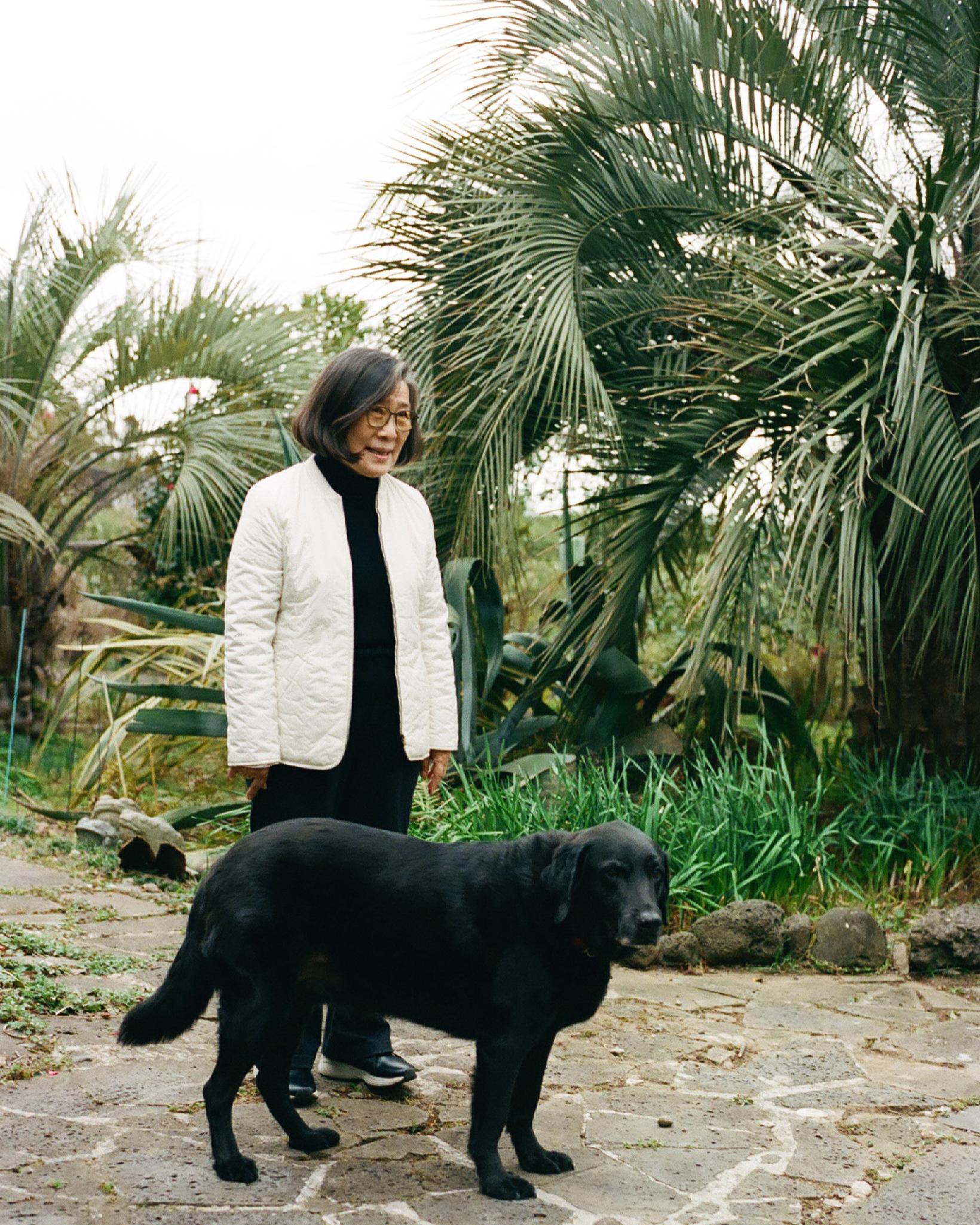"Not everything I encounter in daily life can become a work of art. I have to be selective. Yet, when something truly strikes me—hits me all at once—I feel an irresistible urge to paint it, though I can’t explain why. I believe that if it resonates that strongly with me, surely it will with others too. I don’t replicate what I see. I amplify what draws me in and strip away the unnecessary. I want to paint things as I like them—as though they exist and yet do not."—Kim Bohie
Gallery Hyundai is pleased to announce its collaboration with artist Kim Bohie. Marking the beginning of this new partnership, the gallery will present a solo booth dedicated to Kim at Art Busan 2025, featuring new works from her iconic Towards series.
Renowned for her experimental approach that transcends the traditional boundaries of East Asian and Western painting and the acuity of her formal language, Kim has developed a distinctive practice of landscape painting. Blending interpretation of traditional techniques with a contemporary sensibility, she delicately captures everyday moments in nature and our surroundings on canvas.
Kim incorporates various colored ink techniques into her practice, blending them freely to introduce organic elements into the traditionally flat East Asian painting—thus opening new possibilities in landscape art. Since relocating to Jeju Island in 2003, her gaze has turned toward the everyday environments that surround her—the sea, palm trees, flowers, fruits, seeds, and her constant companion, her dog Leo. With vivid intensity and delicate precision, Kim renders these subjects on canvas, amplifying their vital energy and infusing them with a quiet dynamism. While Kim does not reject objective representation, nothing in her paintings is strictly mimetic. The flowers and fruits that appear in her work, for example, are born through meticulous observation and contemplation. They are then magnified, transformed, and reborn as symbolic structures that express the essential vitality and cyclical nature of life. This approach reflects the artist’s consistent pursuit—not of depiction for its own sake, but of using nature as a lens to look beyond it. A critic once described Kim’s paintings as “meditative landscapes”—a fitting expression for how she quietly, yet profoundly, gazes into the narratives of life held within nature. From tiny blossoms and fruit to towering palm trees and expansive seas, her canvases capture and reflect the rhythms of life through her distinctive, contemplative gaze.
Another defining characteristic of Kim Bohie’s painting lies in the notion of permeation—both in terms of material and technique. In recent works, she places no restriction on medium, freely combining mineral pigments, water, glue, and acrylic on both canvas and hanji (Korean traditional paper). Through this process, she preserves the essential quality of Korean painting, in which colors are gradually absorbed and built up layer by layer. Her work is fundamentally different from the impasto textures of Western oil painting, which rest on the surface. Instead, the repeated cycles of application and drying in Kim’s practice yield a depth of color that is expressed with extraordinary subtlety. In particular, her seascapes of Jeju Island can be seen as an extension of the East Asian concept of pictorial flatness, reinterpreted through delicate accumulation and expansion.
“일상에서 마주치는 모든 것이 작품이 될 수는 없고 선별해야 하는데 꼭 그려야만 하는 것이 내 마음에 훅 들어와 왜일까 생각해도 할 말이 없어요. 내 마음에도 이렇게 꽂히는데 다른 사람들도 분명 공감하지 않을까 생각은 해요. 모사하는 것이 아니니 보여주고 싶은 건 더 크게 키우고 걸리는 것들은 없애버리고. 현실에 있지만 없는 것처럼 내가 좋은 대로 그리고 싶나 봐요.”—김보희
동양화와 서양화의 경계를 넘나드는 실험적 태도와 깊이 있는 조형 언어로 자신만의 독창적인 풍경 회화를 구축해 온 김보희는 전통 회화에 대한 해석과 현대적 조형 감각으로 아우르며 자연과 주변 풍경 등 일상의 순간을 섬세하게 화면에 담는다.
김보희의 초기 작업은 전통 한국화에 기반한 절제되고 서정적인 인물화, 정물화, 강변 산수화로 출발했다. 이 시기의 작품들은 눈에 보이는 경관을 사실적으로 재현하며 자연을 일정한 거리에서 관조하는 시선을 통해 묘사되었다. 이후 작가는 다양한 채색 수묵 기법을 적극적으로 혼용하면서 동양화 특유의 평면적 묘사에 유기적 요소를 결합하며 풍경 회화의 새로운 가능성을 제시했다. 특히 양수리, 충주호반, 제주도 등지의 자연 풍경을 소재로 한 작업에서는 구도에 대한 참신한 해석이 두드러진다. 검은 덩어리처럼 단순화된 산과 섬의 형태, 그 주변을 에워싸고 있는 잔잔한 수면은 채색이 배제된 순수 수묵만으로 표현되어 평면 회화에 대한 또 다른 차원의 접근을 보여준다. 화면에는 최소한의 이미지만 남기고 여백을 강조하거나, 뒤로 물러나는 구도의 참신한 해석을 통해 시각적 거리감을 재해석하며 동양적 풍경 회화를 현대적으로 그려낸다.
또한, 김보희의 회화는 재료와 기법의 특성상 스며듦이 특징이다. 최근 작품에서 작가는 재료에 제한을 두지 않고 캔버스 천과 한지에 분채와 물, 아교 및 아크릴 등을 자유롭게 혼용하여 물감이 스며들게 차곡차곡 색을 쌓아 올리는 한국화의 특성을 그대로 살리고 있다. 김보희의 작품은 유화 물감이 표면 위에 두껍게 층을 이루는 서양화의 마티에르와는 근본적으로 다른 질감을 갖고 있다. 수차례 색을 입히고 말리는 반복적인 과정이 색의 깊이로 섬세하게 표현되는 작가의 제주도 바다 풍경은 동양화적 평면에 대한 또 다른 확장의 시도로 보인다.
2003년 제주도에 정착한 이후, 작가의 시선은 제주의 풍경, 바다, 야자나무, 꽃, 열매, 씨앗, 그리고 작가와 늘 함께하는 반려견 레오와 같이 자신의 일상에 개입해 들어온 주변의 것들로 향한다. 작가는 이렇듯 주변의 자연 풍경을 생동감 있고 세밀하게 포착하면서 그 안에 깃든 생명의 기운을 극대화하여 화면에 담아낸다. 김보희는 객관적 재현을 거부하지는 않지만, 그의 작업 속 풍경 안에서 엄밀하게 재현적인 것은 하나도 없다. 예를 들어, 작품 속의 꽃과 열매는 철저히 관찰과 사유의 과정을 거쳐, 확대되고 변형되며, 본질적 생명성과 순환의 원리를 시각적으로 풀어내는 하나의 상징적 구조로 재탄생한다. 이는 자연을 단순히 묘사하는 데 그치지 않고, 그것을 매개로 그 너머를 들여다보고자 하는 작가의 일관된 태도를 보여준다. 이러한 작업 세계를 두고 한 평론가는 김보희의 회화를 ‘명상적 풍경’이라고 언급한 바 있다. 작은 꽃과 열매부터 거대한 야자수, 그리고 끝없이 펼쳐진 바다에 이르기까지, 김보희는 자연이라는 거대한 존재가 품은 생명의 서사를, 자신의 시선으로 조용히 그리고 깊이 있게 들여다보며 그 안에 담긴 이야기를 화폭에 고스란히 담아낸다.
